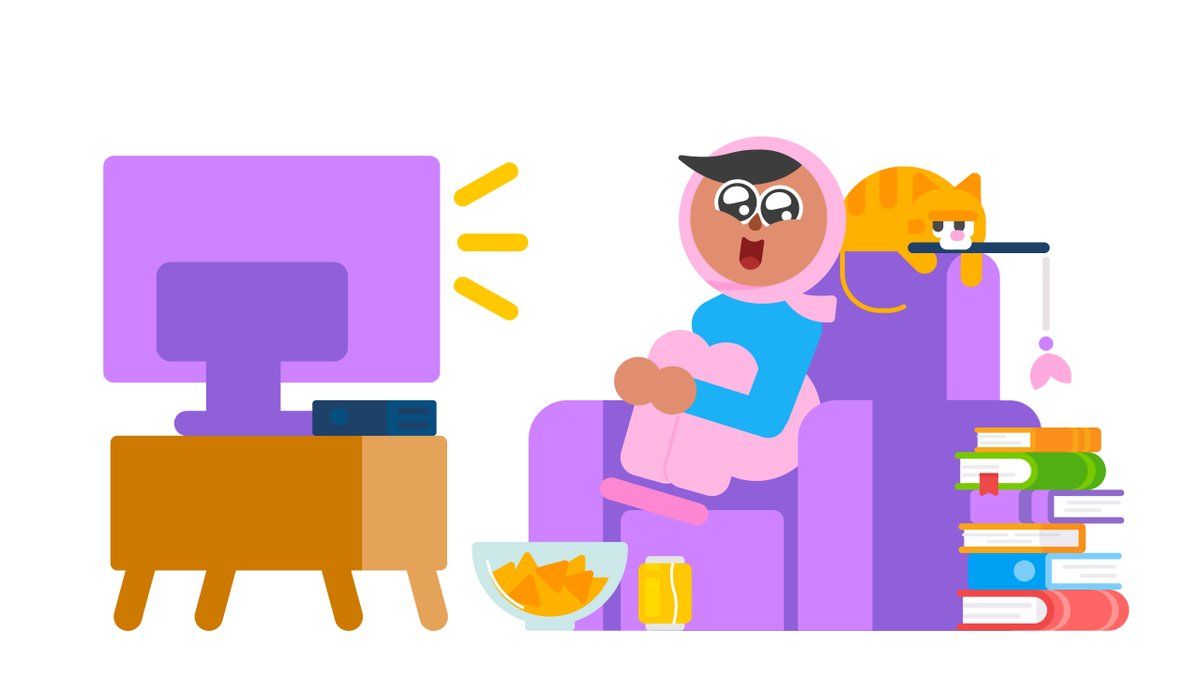There are an estimated half million movies and over 800,000 television shows in existence, and 550 new shows premiered in 2021 alone. And most of these are—or will be—available to viewers across the world! Content has become increasingly global amid the rise of streaming platforms, and the early stay-at-home orders during the onset of the COVID-19 pandemic led to a significant increase in people streaming movies and shows from their homes. The combined effect of streaming technology and a world in isolation meant that international shows, like Squid Game, Ekatarina, Cable Girls, and a number of Korean dramas and Japanese anime, gained a much wider audience. Well, technology, pandemic, and… subtitles.
Those lines at the bottom of our screens have become the gateway into a whole new slew of content in an array of languages. For language learners, these subtitles might help them enjoy a new show in their target language!
Of course, subtitles aren’t always exactly accurate—and the average viewer might wonder: “What’s so hard about getting a translation right?” Turns out, creating accurate, engaging subtitles isn’t as easy as you think, and going behind-the-scenes helps us appreciate just how hard it is to make media and culture accessible across all languages.
First: What’s the difference between subtitles and captions?
Many people equate subtitles and captions, but there are key differences. Captions are typically created for people who aren’t able to hear any audio in the video, and so need to include all of the audio cues on screen. Subtitles translate foreign language films for a new audience and assumes the viewer is able to hear surrounding sounds like music and sound effects, and so typically focus on translating dialogue and ensuring cultural context is preserved in new languages.
Now, however, subtitles and captions are used interchangeably thanks to a new generation of viewers who prefer captions all the time, even if they speak the language of the show. And streaming services have noticed—just look at Stranger Things’ vivid subtitle choices for its latest season.
But back to the original question: What makes for “good” subtitles? Many things, but most importantly: They have to take into account all of the cultural and linguistic nuances in a language to ensure the original mood and meaning of dialogue is captured for a new audience. At Duolingo, localization and globalization teams do similar work across the app to ensure that everything from our funny push notifications to in-app motivating messages work for people across languages. As it turns out, Hollywood’s subtitlers do this, too!
The secret sauce: The making of subtitled media
Eva Raimondi is a senior localization program manager and globalization lead at Duolingo, and previously worked on subtitles and dubbing for a major streaming company. As Eva explains it: “The subtitle translator's job is to balance accuracy to that creative intent while finding ways to keep the content relevant to the target language. But that's made even more complicated by things like the viewer's reading speed or the speaking pace of characters on screen.”
Subtitles aren’t written by one person. Like anything, it takes a village! Typically, when it comes to generating subtitles for major films and television shows, translators create digital files of subtitles, which are reviewed by proofreaders and sometimes country managers, which are people familiar with the country or region where the subtitles will be used.
“Translators are fluent speakers of the content language and are in tune with the regional culture and dialectical variants,” Eva says. “They use that knowledge to make decisions that match the nuance of the language while still being accessible to wider regions.”
For example, if a show has a character that uses the term "y'all" and that becomes the subject of a discussion, a Spanish subtitler may represent that dialect by using a term that is only used in a certain country or region in Latin America. That way, they could express that a dialect is used, while still remaining accessible to their audience.
When subtitles work well, we don’t notice them, and they become a seamless part of the viewing experience! But how do translators create subtitles that capture the nuances of language and culture while keeping pace with the story and action on screen? It’s a process, one that takes a lot of intention.
The art and science of quality subtitles
When you think of subtitles on a movie or show, some of the obvious considerations are the viewer’s reading speed and making sure the subtitles are properly synced with the audio. This is essential to ensuring that viewers are able to read the subtitles to keep up with the action on screen without feeling like the subtitles are spoiling major events!
This means that translators have to consider the trade-offs of accurately translating dialogue and shortening it when needed. They want to stay true to the source material as much as possible while still ensuring that subtitles make for a seamless viewing experience so things aren’t lost in translation!
“If you’re adding subtitles to a reality show where multiple people are talking over each other, you can’t catch everything and you have to determine what’s most important to convey,” Eva says. “A translator may choose to use short phrases or get rid of words that aren’t critical to the story so people can read a subtitle fast enough in the time the person is talking.”
Even more important than the timing of subtitles is the way that they reflect culture. Eva says the first step is to understand the core intent of the dialogue and represent it in a way that makes sense to the audience.
Take Netflix’s first original German production, Dark, which follows the story of two children who go missing in a small town. German learners might know how the language can communicate concepts by creating unique compound words that seem to be almost “untranslatable” (like schadenfreude, a phrase used to describe the feeling of joy at someone’s misfortune), but really, there’s no such thing as untranslatable! It’s just about coming up with the right word, or phrase, to capture the content in the original language and make it easy for the viewers in another culture to understand. Consider the German word weltschmerz, which directly translates to “world pain.” When writing a subtitle, a translator may write this as “feeling like you’re carrying the world on your shoulders” so it would resonate with an English-speaking audience and keep the story moving.
“When creating subtitles, you have to assess what information is most important,” Raimondi says. “As a content creator, do you want your subtitles to be a direct translation of your audio, to fit in well with timing, or do you want to focus on connecting with the audience by converting idioms? There isn't a single answer - it's about finding the balance that lies somewhere in the middle.”

Using subtitles as a window to a new world
Subtitles are a rich tool to open you up to films that reflect other rich languages and cultures. Filmmakers like Bong Joon Ho, the director of the film Parasite, noted that subtitles can open up films to a much more global audience. In his Golden Globes acceptance speech after winning Best Film, he said in Korean (which was translated by director Sharon Choi), “Once you overcome the one-inch tall barrier of subtitles, you’ll be introduced to so many more amazing films.” And if the subtitles pair seamlessly with a foreign language show or movie you’re watching, chances are that the translators who worked on it are well-versed in the language and culture, which is always a recipe for success.
In an age of increasingly global content, subtitles are a tool to learn about other cultures and communities, something that we all appreciate in an age of remote and hybrid work. So, whether you’re looking for the next Squid Game, or simply looking for a fun way to test your language skills, there’s an exciting world of TV and movies waiting for you if you’ll just turn on subtitles!



